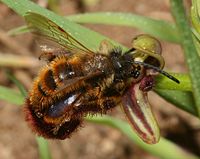Coevolution

Coevolution is like a game that animals and plants play together. They change the way they look or act based on what the other is doing. It's like when you play catch with your friend and you have to change how you throw depending on how your friend throws back to you.
For example, let's say there is a bird with a long, thin beak that is good at getting nectar from flowers, but it needs to be really quick or else another bird could steal its food. So the flower evolves to have a deeper, narrow shape that only the bird with the long beak can reach, while the bird becomes faster and more agile so it can get the nectar before other birds. This is called mutualistic coevolution.
Another form of coevolution happens between predators and their prey. If a predator is really good at catching a certain type of prey, the prey will evolve to be faster or harder to catch. This is called antagonistic coevolution.
Scientists study coevolution to better understand how species interact with each other and how they change over time. It's an important part of understanding how life on Earth has evolved to be the way it is today.
For example, let's say there is a bird with a long, thin beak that is good at getting nectar from flowers, but it needs to be really quick or else another bird could steal its food. So the flower evolves to have a deeper, narrow shape that only the bird with the long beak can reach, while the bird becomes faster and more agile so it can get the nectar before other birds. This is called mutualistic coevolution.
Another form of coevolution happens between predators and their prey. If a predator is really good at catching a certain type of prey, the prey will evolve to be faster or harder to catch. This is called antagonistic coevolution.
Scientists study coevolution to better understand how species interact with each other and how they change over time. It's an important part of understanding how life on Earth has evolved to be the way it is today.
Related topics others have asked about:
